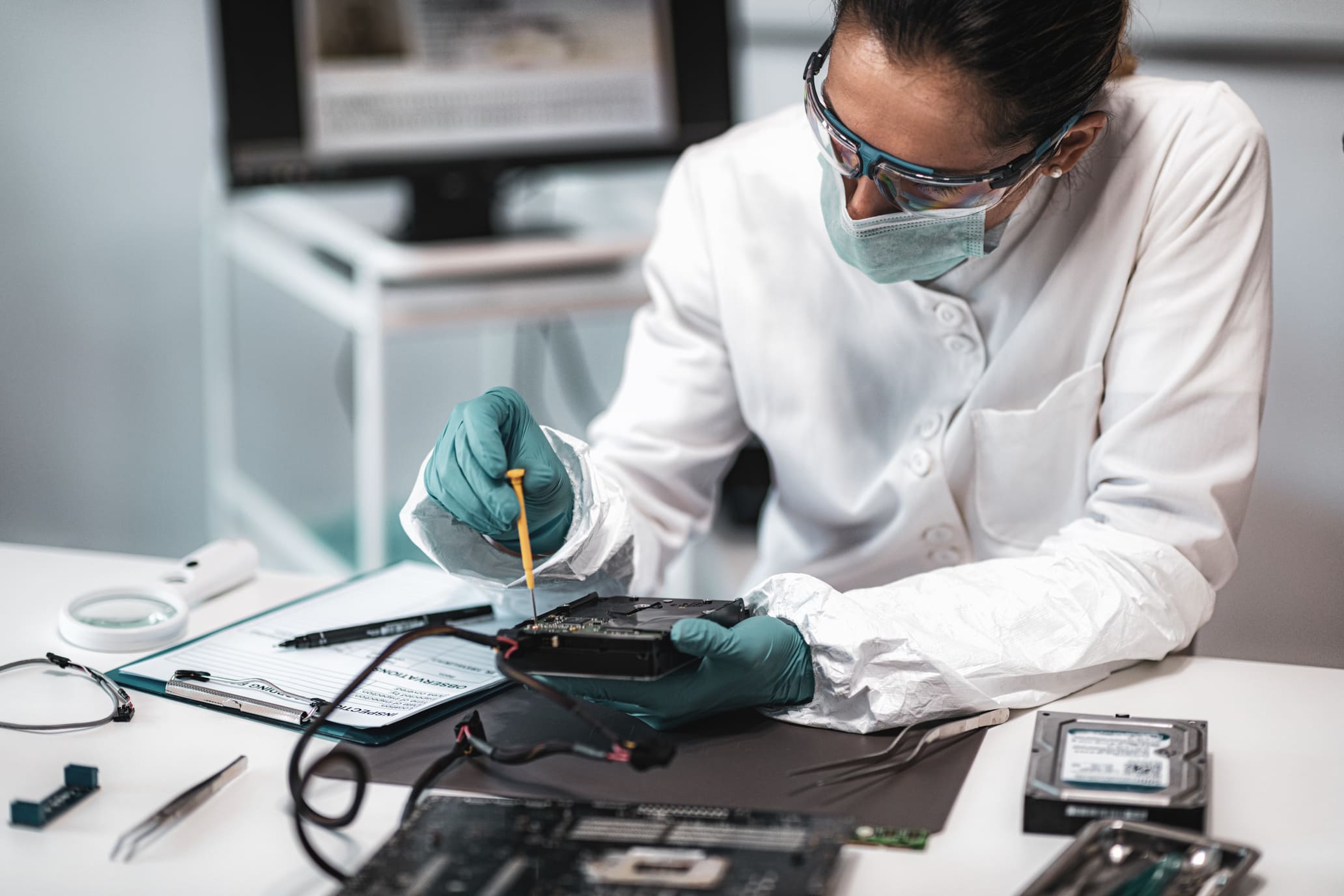
Definition
Digital forensics is the practice of identifying, analyzing, and preserving digital evidence in a manner that is admissible in a court of law. It involves the examination of electronic devices, such as computers, smartphones, and tablets, to recover and analyze data for use as evidence in criminal or civil cases.
Digital forensics professionals use a variety of techniques and tools to analyze electronic devices and recover digital evidence. These techniques may include recovering deleted or damaged data, analyzing log files, and examining the data stored on a device to determine its history and use.
The goal of digital forensics is to accurately and impartially identify, preserve, and analyze digital evidence in a way that is acceptable to the legal system. It requires a strong understanding of computer systems and networks, as well as familiarity with the legal principles that govern the admissibility of digital evidence in court.
Tools for digital forensic
There are many different tools that digital forensics professionals may use in their work, depending on the specific needs of a case and the type of electronic devices involved. Some common tools used in digital forensics include:
- Forensic workstations: These specialized computers are designed specifically for digital forensics and have hardware and software configurations that are optimized for the analysis of electronic devices.
- EnCase: This is a widely used forensic software that allows investigators to create a forensic image of a computer's hard drive, as well as search and analyze the data on the drive.
- FTK (Forensic Toolkit): This is another popular forensic software that allows investigators to create a forensic image of a hard drive, as well as search and analyze the data on the drive.
- X-Ways Forensics: This is a forensic software that allows investigators to create a forensic image of a hard drive, as well as search and analyze the data on the drive.
- Cellebrite: This is a company that produces a range of forensic tools, including hardware and software, that are used to extract and analyze data from mobile devices.
- Oxygen Forensics: This is a forensic software that allows investigators to extract and analyze data from mobile devices, as well as perform forensic analysis on cloud data and other types of electronic evidence.
- DD (ddrescue): This is a command-line tool that is used to create a forensic image of a hard drive or other storage device.
- Autopsy: This is a forensic software that allows investigators to create a forensic image of a hard drive, as well as search and analyze the data on the drive.
- Belkasoft Evidence Center: This is a forensic software that allows investigators to extract and analyze data from a range of electronic devices, including computers, smartphones, and tablets.
- Wireshark: This is a network protocol analyzer that is used to capture and analyze data from networks and network devices.
Digital Forensic in 2023
There are several challenges currently facing the digital forensics industry:
- Keeping up with new technologies: The rapid pace of technological change means that digital forensics professionals must constantly stay up to date with new devices and operating systems in order to be effective.
- Data volume: The increasing amount of data being generated and stored electronically presents a challenge for digital forensics professionals, as it can take a significant amount of time and resources to analyze and interpret large volumes of data.
- Encryption: The use of encryption to protect data can make it difficult for digital forensics professionals to access and analyze electronic evidence.
- Cloud storage: The increasing use of cloud storage poses challenges for digital forensics professionals, as they may not have physical access to the servers and storage devices used by cloud providers.
- Legal issues: There are complex legal issues surrounding the admissibility of digital evidence in court, and digital forensics professionals must be familiar with these issues in order to ensure that their findings are accepted as evidence.
- Funding: Digital forensics can be a resource-intensive field, and many organizations may not have the budget to invest in the necessary tools and training for their forensic teams.
- Cybersecurity threats: The increasing prevalence of cyberattacks and other types of digital threats presents challenges for digital forensics professionals, as they may be called upon to investigate these incidents and identify the perpetrators.
European actors
There are several key organizations and agencies involved in digital forensics in Europe, including:
- European Union Agency for Law Enforcement Cooperation (Europol): Europol is an EU agency that helps member states fight serious international crime and terrorism by providing forensic support, including digital forensics.
- European Network of Forensic Science Institutes (ENFSI): The ENFSI is an association of forensic science institutes in Europe that promotes cooperation and the exchange of information and expertise in the field of forensic science, including digital forensics.
- European Cybercrime Centre (EC3): The EC3 is a unit of Europol that is focused on combating cybercrime, including through the use of digital forensics.
- National forensic laboratories: Each EU member state has its own national forensic laboratory, which is responsible for providing forensic support to law enforcement agencies within the country, including through the use of digital forensics.
- Private forensic firms: There are also many private forensic firms operating in Europe that provide digital forensics services to law enforcement agencies, businesses, and individuals.
There are many other organizations and agencies involved in this field, including universities and research institutes, as well as professional associations and networks.







